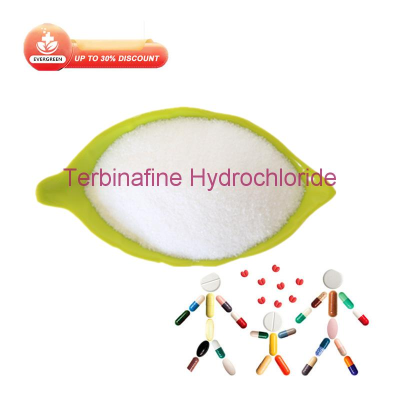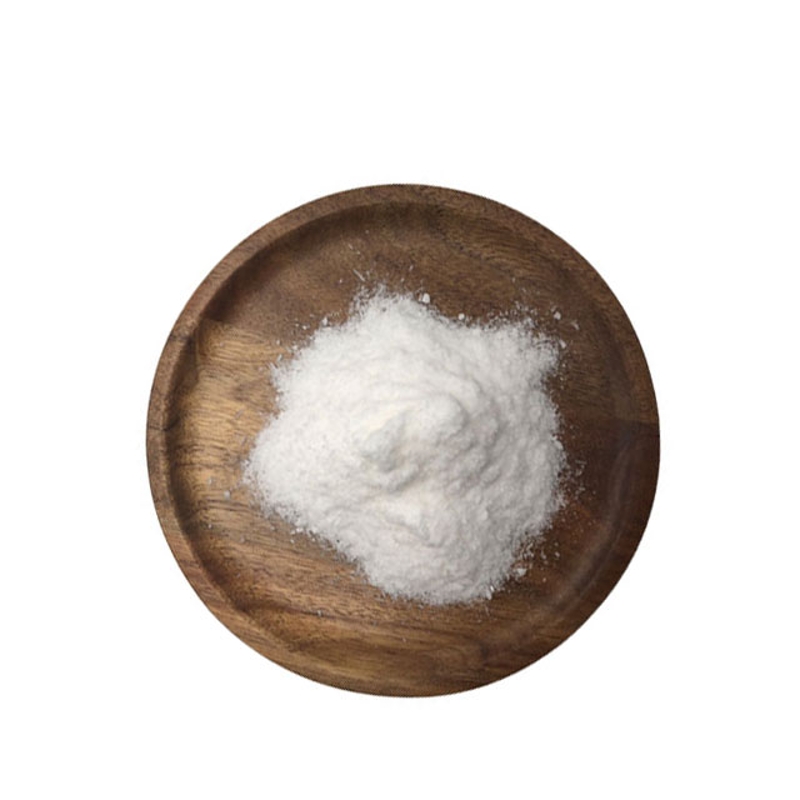-
Categories
-
Pharmaceutical Intermediates
-
Active Pharmaceutical Ingredients
-
Food Additives
- Industrial Coatings
- Agrochemicals
- Dyes and Pigments
- Surfactant
- Flavors and Fragrances
- Chemical Reagents
- Catalyst and Auxiliary
- Natural Products
- Inorganic Chemistry
-
Organic Chemistry
-
Biochemical Engineering
- Analytical Chemistry
- Cosmetic Ingredient
-
Pharmaceutical Intermediates
Promotion
ECHEMI Mall
Wholesale
Weekly Price
Exhibition
News
-
Trade Service
Amoxicillin is the first-line treatment for children with community-acquired pneumonia, but the application of long-term or high-dose antibiotics can cause an increase in drug resistance.
How to avoid the rapid growth of drug resistance is the focus of recent research.
The research team conducted research on how to optimize the use of antibiotics
.
A few days ago, randomized clinical trials from low- and middle-income countries support the treatment time of mild to moderate children for 3 to 5 days, but there is still no research to explore the appropriate daily dose of oral amoxicillin
.
This study (CAP-IT study) aims to assess whether the lower dose and shorter amoxicillin treatment is not weaker than the higher dose and longer treatment method in terms of the 28-day retreatment rate.
This study is one This multi-center, randomized placebo-controlled, 2*2 non-inferiority trial included pediatric patients who were older than 6 months and weighed 6-24 kg who were diagnosed with CAP in the emergency department or hospitalized for less than 48 hours
.
The efficacy of amoxicillin monotherapy with different daily doses (35-50mg/kg or 70-90mg/kg) and different courses of treatment (3 or 7 days) were compared
.
The primary efficacy result is the retreatment rate within 28 days after randomization, and the non-inferiority limit is 8%.
The secondary findings include the severity and duration of CAP symptoms reported by family members, as well as adverse events
.
Results of the study The study finally included a total of 814 children, of which 421 (52%) were men and 393 (48%) were women, with a median age of 2.
5 years
.
At the time of consultation, 441 (54%) children had fever, 578 (71%) children had tachycardia, and 528 (65%) children had shortness of breath
.
591 (73%) children were discharged directly from the emergency department, and 223 (27%) children were hospitalized for less than 48 hours
.
In terms of the main efficacy results, grouped by dose: 12.
6% (51/410) of the children in the low-dose group required additional antibiotic treatment within 28 days; 12.
4% (49/404) of the children in the high-dose group required additional antibiotic treatment within 28 days.
Additional antibiotic treatment was required within the day, with a difference of 0.
2%
.
Figure 1 Dose grouping grouped by treatment course: 12.
5% (51/413) of the children in the short course group required additional antibiotics within 28 days; 12.
5% (49/401) of the children in the long course group required additional antibiotics within 28 days Treatment, the difference is 0.
1%
.
Figure 2 Treatment course grouping.
Both groups meet the non-inferiority criteria
.
Figure 3 Mixed grouping Even if children with severe CAP are included in the subgroup analysis, there is still no significant difference between the two categories: low-dose 17.
3% (31/180) vs high-dose 13.
5 (25/188), p= 0.
18 (unilateral 95% CI -∞~10%) (exceeding the non-inferiority standard); short course of treatment 16% (28/177) vs long course of treatment 14.
8 (28/191), p=0.
73
.
Figure 3 Subgroup analysis-In terms of secondary results of severe CAP, vomiting, fever, shortness of breath, loss of appetite, etc.
were not significantly different among the groups (including dose grouping and treatment course grouping)
.
However, children in the short treatment group had a longer cough duration (HR=1.
2, p=0.
04) and a longer sleep disorder caused by cough (HR=1.
2, p=0.
03), but there was no significant difference in the severity of cough symptoms Related
.
In terms of safety, there were no significant differences between the groups in terms of diarrhea, thrush, rash, etc.
The biggest difference between the groups was the rash phenomenon of patients grouped according to the course of treatment (short course of treatment 22% vs.
long course of treatment 27%), but still not It is statistically significant (p=0.
06).
Research conclusions This study evaluated the retreatment rate of children with CAP who received different courses of treatment and different doses of amoxicillin within 28 days after the emergency or hospital stay for less than 2 days
.
The study found that the therapeutic effect of short course of treatment and low-dose amoxicillin is not bad, similar to the retreatment rate after long course of treatment or high-dose treatment, meeting the non-inferiority standard
.
For children with severe CAP, the difference between the short course group and the long course group did not exceed the non-inferiority standard, but the difference between the low-dose group and the high-dose group exceeded the non-inferiority limit (10%>8%)
.
It is suggested that for children with severe CAP, a higher dose can be selected for treatment
.
In addition, in other recent studies, the Canadian SAFER trial compared the clinical cure rate of 5-day and 10-day high-dose amoxicillin in the treatment of CAP in children.
The results showed that the cure rate was similar in the two groups (89% in the 5-day group, 10 Day group 84%)
.
Another study also found that for non-ICU adult patients, 3-day beta-lactam treatment was no worse than 8-day treatment
.
In short, for children with CAP in emergency department or hospitalization (within 48 hours), in terms of retreatment rate, low doses are no worse than high doses, and short courses are no worse than long courses.
However, clinical severity and the use of previous antibiotics should also be considered in clinical practice.
Factors, such as for severe CAP, higher doses are more effective
.
References: Bielicki JA, Stöhr W, Barratt S, et al.
Effect of Amoxicillin Dose and Treatment Duration on the Need for Antibiotic Re-treatment in Children With Community-Acquired Pneumonia: The CAP-IT Randomized Clinical Trial.
JAMA.
2021 Nov 2;326(17):1713-1724.
How to avoid the rapid growth of drug resistance is the focus of recent research.
The research team conducted research on how to optimize the use of antibiotics
.
A few days ago, randomized clinical trials from low- and middle-income countries support the treatment time of mild to moderate children for 3 to 5 days, but there is still no research to explore the appropriate daily dose of oral amoxicillin
.
This study (CAP-IT study) aims to assess whether the lower dose and shorter amoxicillin treatment is not weaker than the higher dose and longer treatment method in terms of the 28-day retreatment rate.
This study is one This multi-center, randomized placebo-controlled, 2*2 non-inferiority trial included pediatric patients who were older than 6 months and weighed 6-24 kg who were diagnosed with CAP in the emergency department or hospitalized for less than 48 hours
.
The efficacy of amoxicillin monotherapy with different daily doses (35-50mg/kg or 70-90mg/kg) and different courses of treatment (3 or 7 days) were compared
.
The primary efficacy result is the retreatment rate within 28 days after randomization, and the non-inferiority limit is 8%.
The secondary findings include the severity and duration of CAP symptoms reported by family members, as well as adverse events
.
Results of the study The study finally included a total of 814 children, of which 421 (52%) were men and 393 (48%) were women, with a median age of 2.
5 years
.
At the time of consultation, 441 (54%) children had fever, 578 (71%) children had tachycardia, and 528 (65%) children had shortness of breath
.
591 (73%) children were discharged directly from the emergency department, and 223 (27%) children were hospitalized for less than 48 hours
.
In terms of the main efficacy results, grouped by dose: 12.
6% (51/410) of the children in the low-dose group required additional antibiotic treatment within 28 days; 12.
4% (49/404) of the children in the high-dose group required additional antibiotic treatment within 28 days.
Additional antibiotic treatment was required within the day, with a difference of 0.
2%
.
Figure 1 Dose grouping grouped by treatment course: 12.
5% (51/413) of the children in the short course group required additional antibiotics within 28 days; 12.
5% (49/401) of the children in the long course group required additional antibiotics within 28 days Treatment, the difference is 0.
1%
.
Figure 2 Treatment course grouping.
Both groups meet the non-inferiority criteria
.
Figure 3 Mixed grouping Even if children with severe CAP are included in the subgroup analysis, there is still no significant difference between the two categories: low-dose 17.
3% (31/180) vs high-dose 13.
5 (25/188), p= 0.
18 (unilateral 95% CI -∞~10%) (exceeding the non-inferiority standard); short course of treatment 16% (28/177) vs long course of treatment 14.
8 (28/191), p=0.
73
.
Figure 3 Subgroup analysis-In terms of secondary results of severe CAP, vomiting, fever, shortness of breath, loss of appetite, etc.
were not significantly different among the groups (including dose grouping and treatment course grouping)
.
However, children in the short treatment group had a longer cough duration (HR=1.
2, p=0.
04) and a longer sleep disorder caused by cough (HR=1.
2, p=0.
03), but there was no significant difference in the severity of cough symptoms Related
.
In terms of safety, there were no significant differences between the groups in terms of diarrhea, thrush, rash, etc.
The biggest difference between the groups was the rash phenomenon of patients grouped according to the course of treatment (short course of treatment 22% vs.
long course of treatment 27%), but still not It is statistically significant (p=0.
06).
Research conclusions This study evaluated the retreatment rate of children with CAP who received different courses of treatment and different doses of amoxicillin within 28 days after the emergency or hospital stay for less than 2 days
.
The study found that the therapeutic effect of short course of treatment and low-dose amoxicillin is not bad, similar to the retreatment rate after long course of treatment or high-dose treatment, meeting the non-inferiority standard
.
For children with severe CAP, the difference between the short course group and the long course group did not exceed the non-inferiority standard, but the difference between the low-dose group and the high-dose group exceeded the non-inferiority limit (10%>8%)
.
It is suggested that for children with severe CAP, a higher dose can be selected for treatment
.
In addition, in other recent studies, the Canadian SAFER trial compared the clinical cure rate of 5-day and 10-day high-dose amoxicillin in the treatment of CAP in children.
The results showed that the cure rate was similar in the two groups (89% in the 5-day group, 10 Day group 84%)
.
Another study also found that for non-ICU adult patients, 3-day beta-lactam treatment was no worse than 8-day treatment
.
In short, for children with CAP in emergency department or hospitalization (within 48 hours), in terms of retreatment rate, low doses are no worse than high doses, and short courses are no worse than long courses.
However, clinical severity and the use of previous antibiotics should also be considered in clinical practice.
Factors, such as for severe CAP, higher doses are more effective
.
References: Bielicki JA, Stöhr W, Barratt S, et al.
Effect of Amoxicillin Dose and Treatment Duration on the Need for Antibiotic Re-treatment in Children With Community-Acquired Pneumonia: The CAP-IT Randomized Clinical Trial.
JAMA.
2021 Nov 2;326(17):1713-1724.







